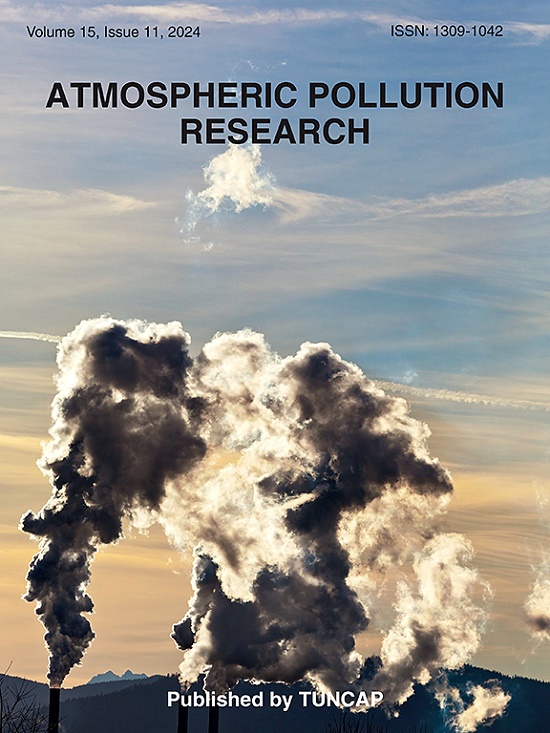Improving PM2.5 simulations using LSTM: a study on spatiotemporal generalization
IF 3.5
3区 环境科学与生态学
Q2 ENVIRONMENTAL SCIENCES
引用次数: 0
Abstract
Deep learning models, particularly long short-term memory (LSTM) networks, have shown strong potential for bias correction in air quality simulations. Although LSTM-based models have demonstrated success in improving PM2.5 simulations during specific periods such as winter months or heavy pollution events, their ability to generalize across varying temporal intervals and geographical locations remains underexplored. This study systematically investigates the spatiotemporal generalization capabilities of LSTM-based (LSTMLocal, LSTMRegional, LSTMRegional-idx, LSTMRegional-sub) models across 12 monthly intervals and 34 monitoring sites in Beijing. Benchmark comparisons with alternative deep learning models (RNN, GRU, BPNN, CNN) demonstrate the superiority of LSTM-based model in improving predictive performance. Seasonal analysis reveals that the LSTMLocal and LSTMRegional-sub model achieved modest gains during summer half-year (May to October) but achieved significant improvements during winter half-year (November to April), with average RMSE reductions of −5.89 % (November), −17.40 % (December), −6.37 % (January), 0.36 % (February), −5.87 % (March) and −1.57 % (April). Spatially, urban sites show moderate gains, but suburban sites exhibit greater improvement, with average RMSE of −5.14 % (Center), −2.26 % (South-East), −7.05 % (North-East), −8.39 % (South-West) and −12.37 % (North-West). These findings highlight the robust spatiotemporal generalization of LSTM-based models and support their applicability for real-time bias correction, long-term forecasting, and air quality dataset enhancement at fine spatial and temporal resolutions.

利用LSTM改进PM2.5模拟:时空概化研究
深度学习模型,特别是长短期记忆(LSTM)网络,在空气质量模拟中显示出强大的偏差校正潜力。尽管基于lstm的模型在改善特定时期(如冬季或重污染事件)的PM2.5模拟方面取得了成功,但它们在不同时间间隔和地理位置上的推广能力仍未得到充分探索。基于lstm模型(LSTMLocal、LSTMRegional、LSTMRegional-idx、LSTMRegional-sub)的时空概化能力在北京地区34个监测点上进行了系统研究。与其他深度学习模型(RNN, GRU, BPNN, CNN)的基准比较证明了基于lstm的模型在提高预测性能方面的优越性。季节分析表明,LSTMLocal和lstmregion -sub模式在夏季半年(5 - 10月)取得了适度的增益,但在冬季半年(11 - 4月)取得了显著的增益,平均RMSE降低了- 5.89%(11月)、- 17.40%(12月)、- 6.37%(1月)、0.36%(2月)、- 5.87%(3月)和- 1.57%(4月)。从空间上看,城市站点表现出适度的增长,但郊区站点表现出更大的改善,平均RMSE为- 5.14%(中心),- 2.26%(东南),- 7.05%(东北),- 8.39%(西南)和- 12.37%(西北)。这些发现突出了基于lstm模型的强大时空泛化,并支持其在精细时空分辨率下的实时偏差校正、长期预测和空气质量数据集增强方面的适用性。
本文章由计算机程序翻译,如有差异,请以英文原文为准。
求助全文
约1分钟内获得全文
求助全文
来源期刊

Atmospheric Pollution Research
ENVIRONMENTAL SCIENCES-
CiteScore
8.30
自引率
6.70%
发文量
256
审稿时长
36 days
期刊介绍:
Atmospheric Pollution Research (APR) is an international journal designed for the publication of articles on air pollution. Papers should present novel experimental results, theory and modeling of air pollution on local, regional, or global scales. Areas covered are research on inorganic, organic, and persistent organic air pollutants, air quality monitoring, air quality management, atmospheric dispersion and transport, air-surface (soil, water, and vegetation) exchange of pollutants, dry and wet deposition, indoor air quality, exposure assessment, health effects, satellite measurements, natural emissions, atmospheric chemistry, greenhouse gases, and effects on climate change.
 求助内容:
求助内容: 应助结果提醒方式:
应助结果提醒方式:


